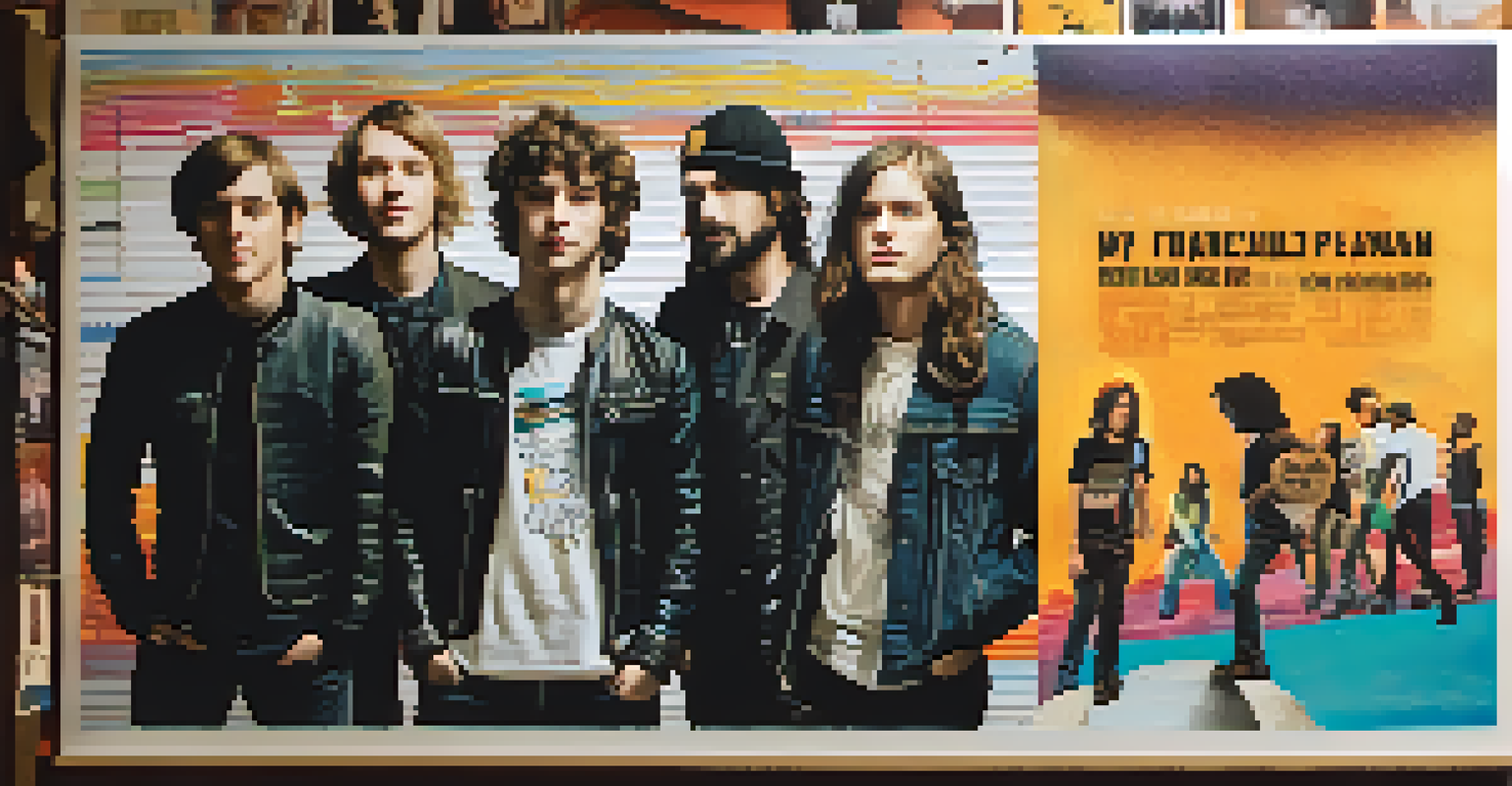The Impact of Crowdfunding on Music Projects and Artists

Understanding Crowdfunding in the Music Industry
Crowdfunding has revolutionized the way artists fund their projects. Instead of relying on traditional music labels, musicians now turn to platforms like Kickstarter and Indiegogo to raise money directly from fans. This model not only democratizes funding but also allows artists to maintain creative control over their work.
Crowdfunding is an incredible way to connect directly with your fans and build a community around your music.
Artists can present their ideas and directly engage with their audience, creating a sense of community. Fans feel invested, often receiving exclusive rewards or experiences in return for their support. This personal connection can lead to a more loyal fan base, which is invaluable in today’s competitive music landscape.
Understanding this shift is crucial for both new and established artists. As crowdfunding continues to gain traction, it offers opportunities for musicians to innovate and explore new creative avenues without the constraints of traditional funding sources.
The Financial Benefits of Crowdfunding for Musicians
One of the most obvious advantages of crowdfunding is financial support. Artists can raise substantial amounts of money without incurring debt or giving away equity in their work. This financial independence allows musicians to invest in high-quality production, marketing, and distribution.

Moreover, the funds raised through crowdfunding can often exceed what an artist might receive from a traditional record label advance. This means artists can allocate resources to things that truly matter to them and their vision, whether it’s hiring musicians, renting a studio, or creating visually stunning music videos.
Crowdfunding Empowers Musicians
Artists now have the financial independence to fund their projects directly through platforms like Kickstarter and Indiegogo.
In many cases, crowdfunding can also provide a safety net. If a project doesn’t reach its funding goal, artists may not be obligated to deliver rewards, thus reducing the financial risk. This flexibility can empower musicians to take creative risks that they might otherwise shy away from.
Building a Community Through Crowdfunding
Crowdfunding isn’t just about raising money; it’s about building a community. When artists reach out to their fans for support, they’re fostering a relationship that goes beyond just music. This interaction helps to create a sense of belonging among fans who feel they are part of the artist’s journey.
The future of music lies in the hands of those who are willing to innovate and embrace new funding models.
Through regular updates, behind-the-scenes content, and personalized rewards, artists can keep their supporters engaged. This not only strengthens the bond but can also lead to word-of-mouth promotion, as excited fans share their involvement with friends and family.
The community aspect of crowdfunding can be especially beneficial for emerging artists. By cultivating a dedicated fan base early on, they set the foundation for a sustainable career in music, with supporters who will likely continue to back future projects.
Challenges Artists Face with Crowdfunding
While crowdfunding offers many advantages, it’s not without its challenges. For instance, creating a successful campaign requires significant effort in planning, marketing, and outreach. Artists must develop a compelling narrative and produce eye-catching visuals to draw in potential backers.
Moreover, competition on crowdfunding platforms can be fierce. With countless projects vying for attention, it’s essential for artists to stand out. This often means investing time and resources in social media promotion and networking, which can divert focus from the actual creative process.
Community Building is Key
Crowdfunding fosters a strong connection between artists and fans, creating a loyal community invested in the artist's journey.
Additionally, artists face the pressure of delivering on their promises. Failing to meet the expectations of supporters can lead to disappointment and damage an artist's reputation. This underscores the importance of setting realistic goals and timelines in their campaigns.
Successful Crowdfunding Campaigns: Case Studies
Several artists have successfully harnessed the power of crowdfunding to launch their careers. For example, Amanda Palmer famously raised over a million dollars on Kickstarter to fund her album and tour, demonstrating the potential of this funding model. Her success story inspired countless others to explore crowdfunding as a viable option.
Another notable case is the indie band 'The Decemberists,' who funded their album through PledgeMusic, offering fans exclusive content and experiences. Their campaign not only funded the project but also fostered a deeper connection with their audience.
These case studies highlight that successful crowdfunding campaigns often include a well-defined strategy, authentic storytelling, and genuine engagement with fans, serving as valuable lessons for aspiring artists.
The Role of Social Media in Crowdfunding Success
Social media plays a pivotal role in the success of crowdfunding campaigns. Platforms like Instagram, Twitter, and Facebook allow artists to share their stories, updates, and campaign links with a broad audience. This instant access to potential backers is a game-changer for musicians looking to raise funds.
Engaging content such as videos, live streams, and interactive posts can capture attention and encourage shares, expanding an artist’s reach exponentially. The more people see and interact with a campaign, the higher the chances of reaching funding goals.
Social Media Boosts Campaigns
Utilizing social media effectively can significantly enhance the visibility and success of crowdfunding efforts for musicians.
Furthermore, social media fosters a sense of urgency. By creating countdowns and shareable content, artists can motivate fans to contribute sooner rather than later, ensuring that campaigns gain momentum during critical fundraising periods.
Future Trends in Music Crowdfunding
As technology evolves, the landscape of crowdfunding in music is likely to change as well. Emerging trends, such as blockchain technology and decentralized financing, may offer new ways for artists to connect with fans and secure funding. These innovations could enhance transparency and trust in the crowdfunding process.
Additionally, the rise of subscription-based platforms is altering how artists monetize their work. Services like Patreon allow fans to support artists on an ongoing basis, providing a steady income stream rather than relying on one-off campaigns.

These trends suggest that crowdfunding will continue to be a vital part of the music industry, enabling artists to thrive in an ever-changing environment. By adapting to these shifts, musicians can harness the power of crowdfunding to cultivate their careers and foster deeper connections with their audience.